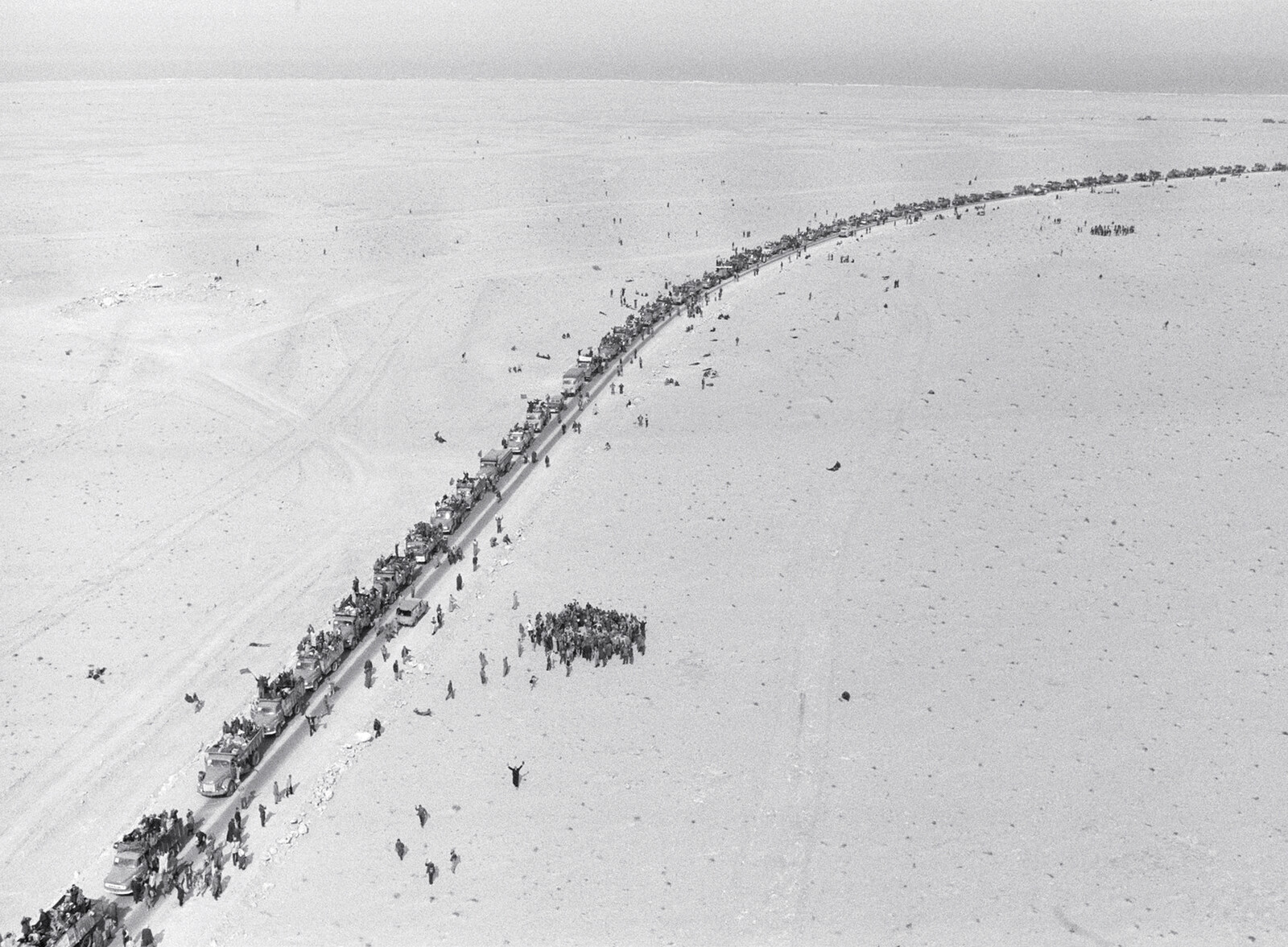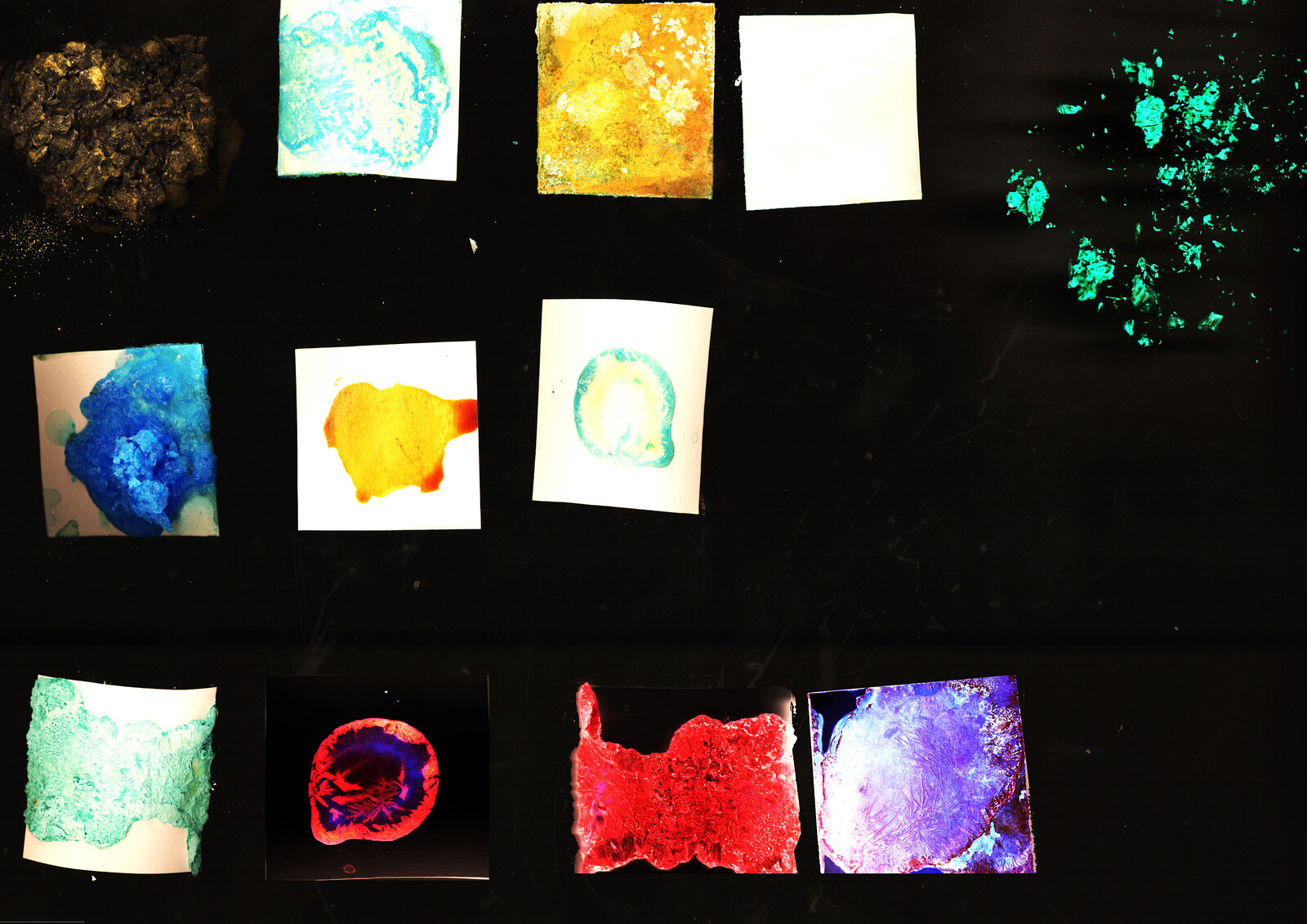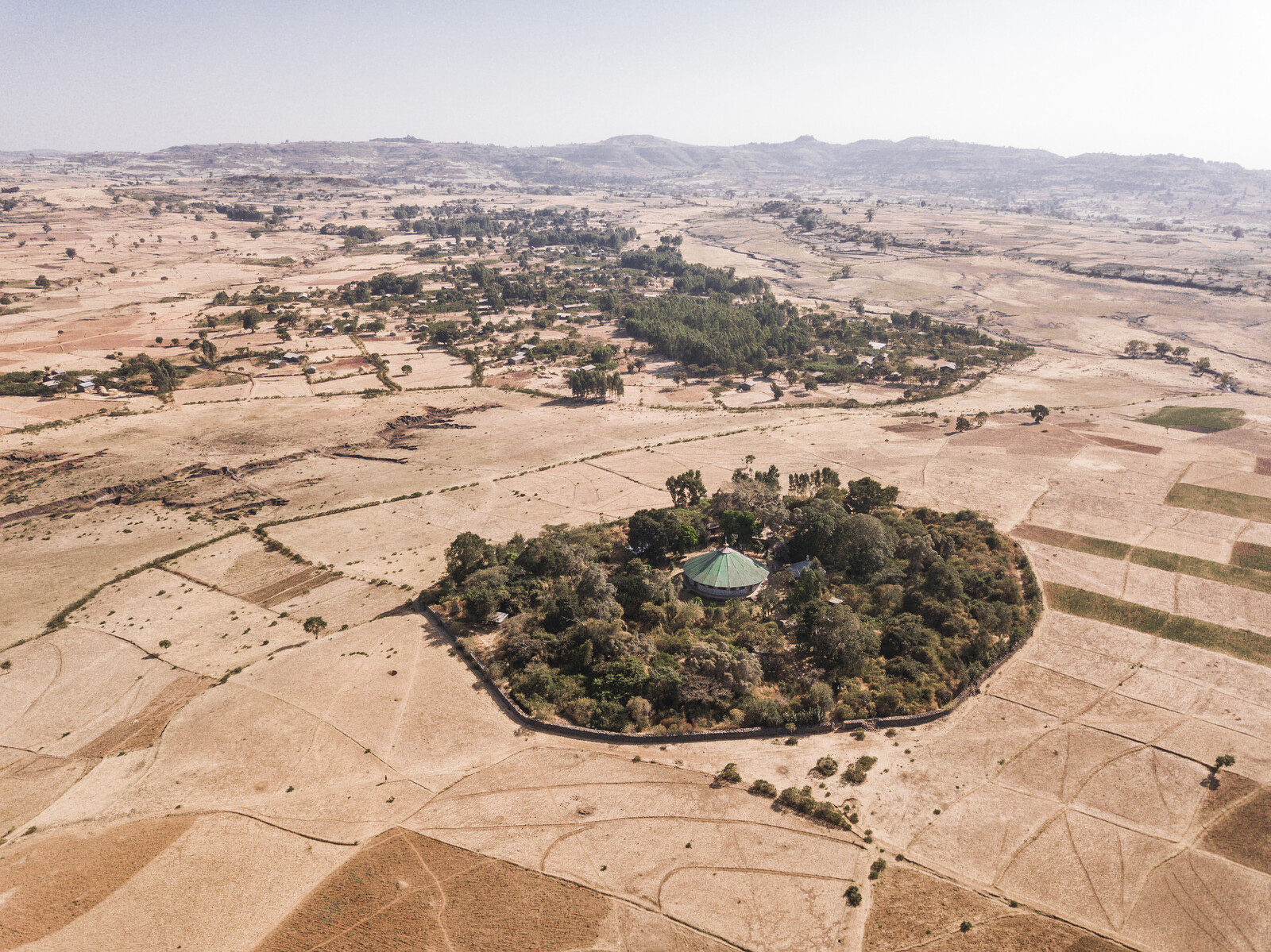1.
In his 1957 book Oriental Despotism, historian Karl Wittfogel regaled his readers with the bleak fate of the East Asian rice farmer, condemned by the enormous concentrations of capital required to maintain rice terraces to submit permanently to totalitarian regimes. Unlike a slash-and-burn farmer, who might move if oppressed, a rice farmer was perpetually tied to a vast and permanent irrigation system, and was ruled over by engineers and priests, trapped in what Wittfogel called “hydraulic despotism.”
Wittfogel’s portrait drew upon a long history of Western representations of rice farming as the most inescapable kind of serfdom. It echoed Karl Marx’s own negative view of the organizational capacity of peasants (in The Eighteenth Brumaire of Louis Napoleon, Marx famously compared the peasants to a sack of potatoes) and conformed to the Marxist doctrine purporting that substructure determines superstructure: how a society produces its basic needs will fix the form that its culture takes. At the same time, Wittfogel’s description also heightens a conventional Cold War opposition between democratic Western societies and authoritarian Eastern regimes, in which liberal democracy is treated as something culturally inherent in being Western, whereas the East tends to totalitarianism. Across the political spectrum, the image of the rice farmer, up to his knees in mud and caught in a position of backbreaking labor, has been presented as the embodiment of timeless corporeal servitude.1
If Wittfogel’s theories hold true anywhere, then they should hold true for Bali. Not only is the island dependent on the irrigation of its volcanic landscape for the growing of rice, but, after the collapse of the Majapahit Empire in 1517, Bali used intensive cultivation as a means to turn away from trade with the outside world. At the time, Bali was one of the most densely populated places on Earth, an artificial landscape whose infrastructural needs could perhaps only be compared to the Dutch polders. Yet where the Dutch turned their attention outward, the Balinese directed their ambitions inward, to the construction of a perfect state characterized by rituals focused on the void of the volcano lake. Bali had rice, and spurned the world.
Bali’s introversion has multiple explanations. One is directly geographical: the island is dominated by two volcanos, Batur and Agung, that deflect rain to its southern part. The main trade routes of the Java Sea, however, run along its northern coast. A second explanation is historical: the retreat of Majapahit Hindu courts in the face of Islamic expansion in Java resulted in a cultural isolation that complemented the island’s physical security. Yet, despite this isolation, Bali did not fit Wittfogel’s description of an authoritarian and bureaucratic state. Violent coercion seemed, at the level of the farming community, to be rare. Internally, Bali’s relations were largely democratic; externally, they were defined by ritual artistic and musical competitions between social organizations. Although “wars” frequently broke out among the island’s micro-kingdoms, they were largely symbolic and usually concluded in duels to the death between individual aristocrats, rather than large-scale killings.
The fieldwork that Margaret Mead and Gregory Bateson conducted in Bali in the 1930s transformed the discipline of anthropology through the use of photography. Their photographs (some 25,000) of Balinese customs, family life, and village activities not only captured the vitality and exuberance of the island’s festivals, but also attempted to describe—in a manner that cannot be found in previous ethnographic surveys—its internal logical consistency. Their photos, published in the 1942 book Balinese Character, were not static portraits, but rather sequences of images recalling the snapshot; they captured transitory events (such as a child playing in the folds of his father’s clothes) and encouraged the viewer to read between the images with interpolations, interpretations, and comparisons. The work would establish Bali as a canonical subject within anthropology—canonical in the sense that Bali would not only continue to be studied, but that it would become a privileged test case over which various methodologies sparred. Yet, Mead’s and Bateson’s invention of new techniques in visual anthropology was not a product of expertise, but of ignorance. Neither spoke the Balinese language fluently, and they remained dependent on local translators until the end of their fieldwork. Their apparent openness was a result of the need to improvise a method of gathering comparative data without any emic insight into a culture at all. At the same time, their observations would be crucial to their shared involvement in the invention of the metascience of cybernetics; they would also inform Bateson’s formulation of the origins of schizophrenia (what he called “schismogenesis”), as the creation of a contradictory situation from which a subject cannot extract itself. What fascinated Mead and Bateson was that Bali seemed to have found mechanisms for avoiding disruptive conflicts on political, social, and psychological planes.
There is another explanation for Bali’s isolation: it was isolationist, spurning the outside world as an act of political will, as argued in Clifford Geertz’s Negara: The Theatre State in Nineteenth-Century Bali. Geertz purports that the organization of Bali’s Negara—the seat of political power—was characterized by a spiritual and political monadism that made the outside world not appear as part of reality. From trade to architecture to cremation rituals, everything possible was undertaken to orient political life inward, toward the center of the island, from where water and volcanic eruptions came. The goal of political life was not the accumulation of power, but rather the correct enactment of political rituals, and “mass ritual was not a device to shore up the state, but rather the state, even in its final gasp, was a device for the enactment of mass ritual.”2
By the 1970s, Bali had become, perhaps, the most studied site in the discipline of anthropology. In The Wet and the Dry: Traditional Irrigation in Bali and Morocco, Geertz compared Bali to wheat-growing Morocco: whereas Morocco’s agriculture was competitive, a zero-sum game that rewarded conflict, Balinese rice farmers had strong incentives for working cooperatively. Far from being automatically oppressive, Geertz’s argument implied, this hydraulic society actually turned out to be marked by interdependence and shared solutions.
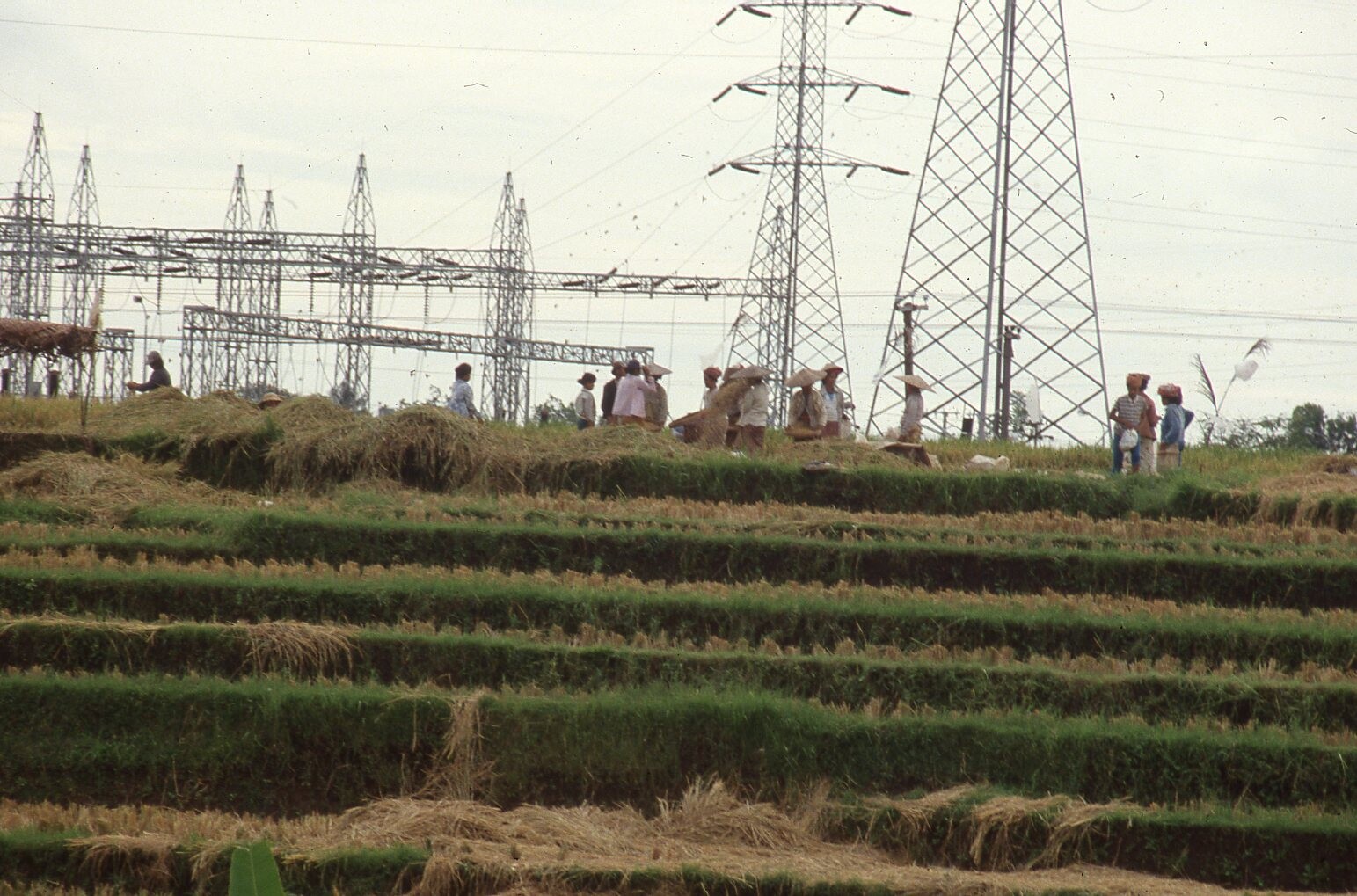
Balinese rice fields, 1978. Image: Asian Development Bank.
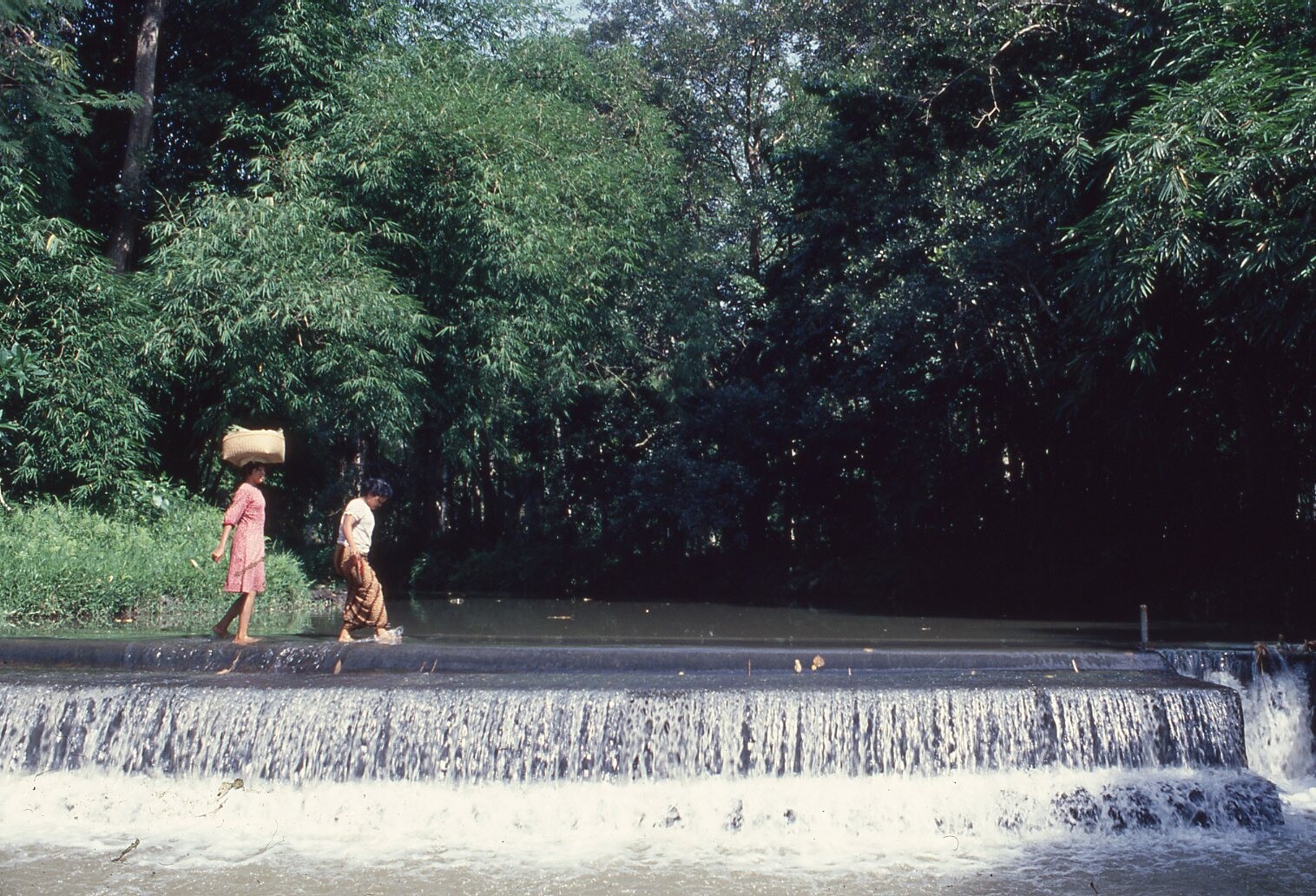
A shallow weir, 1978. Image: Asian Development Bank.
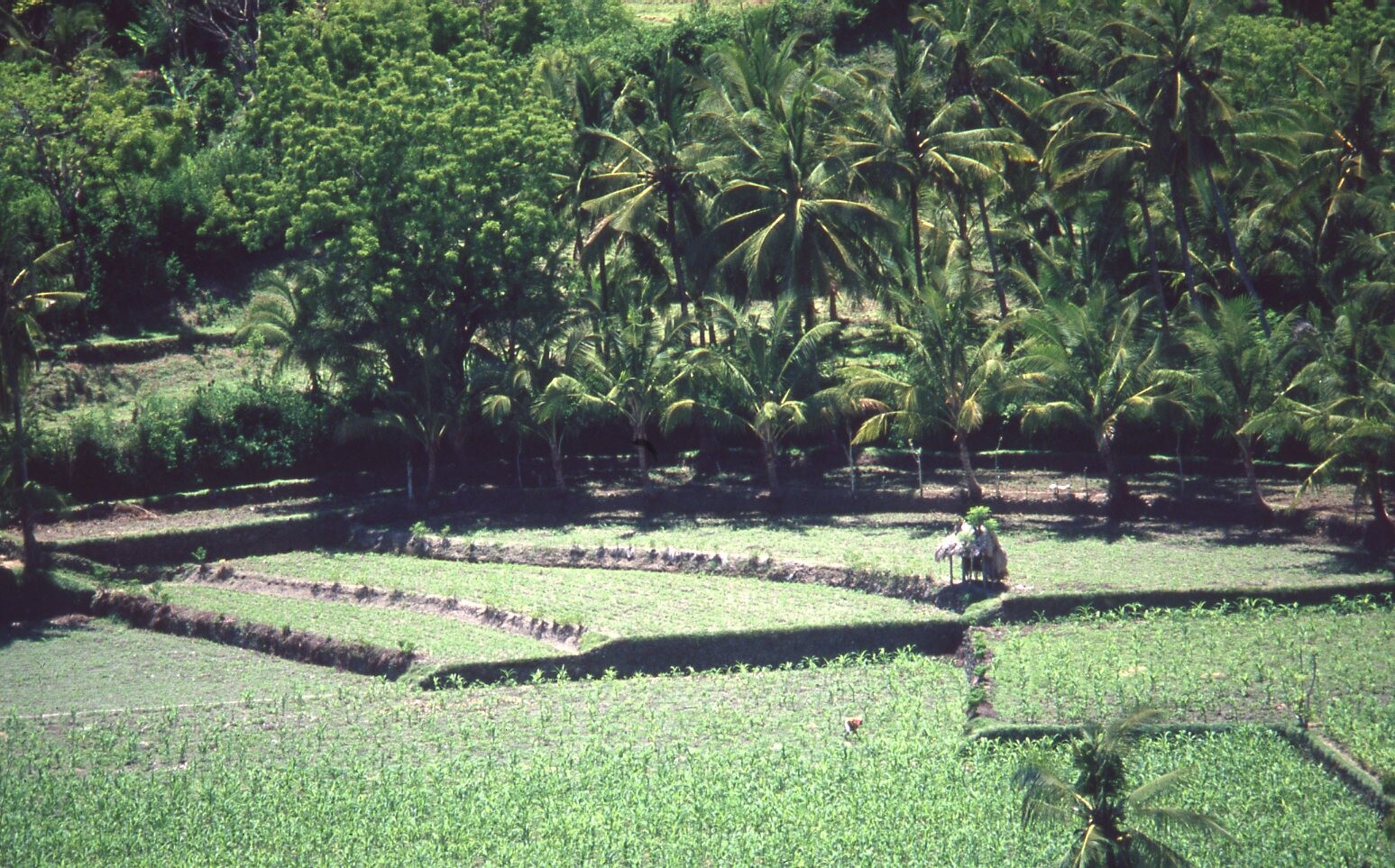
Traditional cropping, 1978. Image: Asian Development Bank.
Balinese rice fields, 1978. Image: Asian Development Bank.
2.
It was into this overdetermined—and, in some senses, overwritten—context that a young California graduate student, Stephen Lansing, arrived on the scene in the early 1980s, intending to prepare a quite conventional PhD thesis about the nature and role of texts in Balinese theatrical performances. However, as he attended meetings in a village in the south of the island, he was struck by the unusual amount of non-ritual activity occupying the meetings that he had also observed at the local pura, or temple. Lansing had anticipated discussions of the proper ritual procedures for lunar calendar festivals, as well as the occasional theological digression. To his surprise, these temple meetings appeared to spend an inordinate amount of time on something quite mundane—the maintenance of the island’s complex network of water canals. The meetings, conducted by local subaks—small, democratically run organizations of local farmers, each one of which was usually comprised of fewer than a hundred members—were debating a system that had always been present on the island, but had recently become much more visible from the outside, because they had suddenly ceased to work.
The subak system traditionally consists of two parts: the physical infrastructure of irrigation and a careful synchronization of the planting schedule. The infrastructure is made up of hundreds of small interventions in the irrigation canals—narrow bamboo pipes, roof tiles used as water dividers, small weirs, stamped-earth retaining walls. Together, they divide the water among farmers with meticulous exactitude, based on a principle of proportional ownership. Calculations of divisions of water go down to pipes the width of two fingers—all that is needed to water a quarter of a hectare, or to produce in the order of a ton of rice—enough to sustain a family of five. At the intersections of the pipes, spillbacks are included, so that any excess flows of water is returned to collective supplies. Water is treated as a sacred and sensitive substance, as indeed it is considered as such from the Balinese perspective. The infrastructure is so delicate that a single fallen branch can interfere with the water supply en route to dozens of rice farmers. Yet this fragility contributes to the system’s strength, as all farmers—or, more precisely, all subak members—are then involved in the constant surveillance and maintenance of the canals.
The water used for irrigation streams down from the island’s volcanic crater lake and is a symbol of community. All the fresh water mingles in the lake before it is divided into the water of one city and another, or one family and another. Its division among different settlements and families also represents genealogical descent—it is believed that just as water flows from one lake, so everyone descends from the same ancestors. The past can therefore be represented spatially, with reference to the middle of the island. Or rather, the crater lake can be understood as a repository of both the future and the past. It is the source of future harvests as well as the collective point of origin. According to the Balinese idea of time, the past and the future can and should be homologous. It is the present that is irregular.
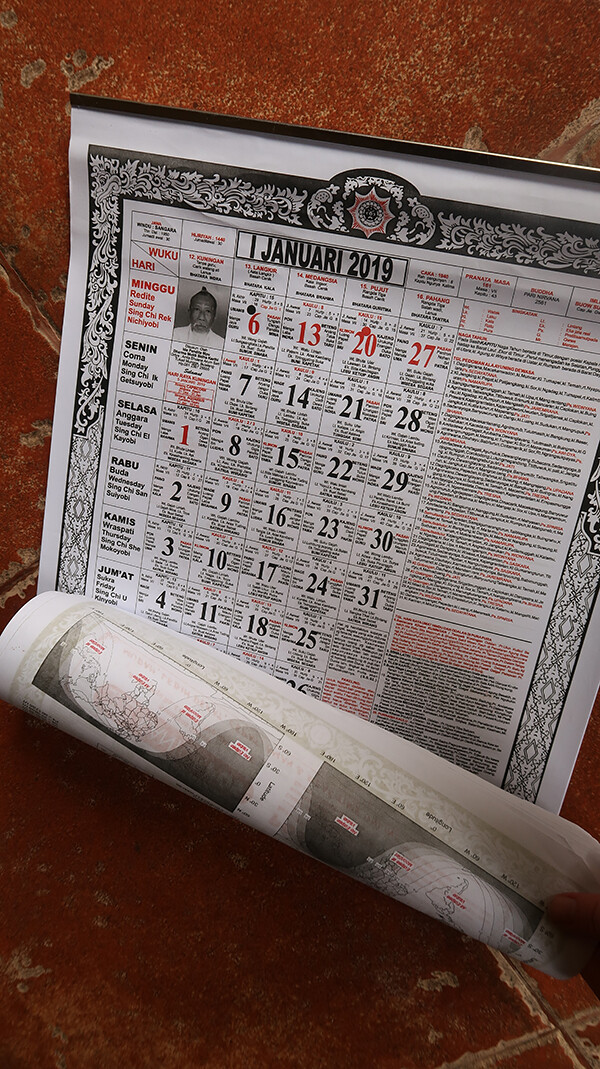

Typical pawukon calendar. Photo: Adam Jasper.
Perhaps unsurprisingly, the Balinese calendar is considered to be the most complex calendar in use anywhere in the world. The calendar is divided into two simultaneous but independent systems: the pawukon calendar and the saka calendar. The saka calendar is lunar, and begins on an uncounted day of silence, known as the nyepi. The pawukon calendar, however, is entirely numerically driven. It consists of a series of weeks that run in parallel. A two-day week runs Menga, Pepet, Menga, Pepet, Menga, Pepet; a three-day week, Pasah, Beteng, Kajeng, Pasah, Beteng, Kajeng; and so on, up until a ten-day week. In this way, each day has a unique identity, one that will not be repeated until the entire cycle runs its course after 210 days. Based on the sequence of names, some days are good for farming, others good for carpentry. Some days are good for both, and on such days, carpenters go into the rice fields to erect shelters for farmers. By the coincidence of meaningful days, the entire annual calendar is experienced as a series of finely calibrated festivals in which different groups are called to appear in various combinations. Work, as Westerners would understand it, is for the most part a side effect of the preparation for, and enactment of, these festivals.
These calendars regulate all elements of daily Balinese life; but in particular, they determine the sequence of planting and harvesting that farmers undertake. The agreement of the subaks on the interpretation of this schedule is crucial for the simultaneous flooding of hundreds of acres of rice fields, a negotiation that determines both the amount of available water and the risk of pest infestation. In Lansing’s analysis, the system’s spatial and temporal elements work together like clockwork, underpinning not only the prosperity of the farms, but also the symbolic coherence of the Balinese lifeworld.3
The subak system functions as a giant network that effectively synchronizes both the physical and cultural lives of the island. The network derives its consistency from the farmers who, in the context of direct democratic assemblies, make collective decisions about what to repair and when to plant. Through a complex system of ostensibly religious offerings, the Balinese continually renew the infrastructure that keeps their terraced rice fields productive.
3.
The Balinese farmers were not only cooperative, as Geertz had argued. They also turned out to be radically politically autonomous. In the late 1970s, Bali’s agriculture had fallen into a state of precarity and decline, largely brought about by an attempt on the part of the Indonesian government and international development banks to introduce a shorter cycle of cropping, along with chemical pesticides and fertilizers. These investments, under the title of BIMAS (Bimbingan Massal, or “massive guidance”), were intended to increase the amount of rice for export, effectively bringing Bali into a system of centralized plantation farming that already characterized the agriculture of Java in the Dutch colonial era. The disastrous effects of these efforts were visible not only in rice production—which markedly decreased while being “scientifically managed,” falling prey to plagues of mice and new diseases—but also in the cosmological experience of the Balinese, whose long-established rituals were thrown into chaos by the new schedules.
Yet Bali was the first site of political struggle in the Global South where the “Green Revolution” was effectively rolled back. This resistance was achieved not through protest, but through the assembly and presentation of evidence about the complexity of Bali’s preexisting forms of cultivation. Stephen Lansing was by no means the discoverer of the subaks; rather, he helped to develop the tools that made their function communicable. Through a computer model of the Balinese irrigation system developed in collaboration the oceanographer James Kremer, it became possible for Lansing to convince the international development banks funding the BIMAS project of the single most salient problem in their own radically simplified cosmology: that they would, inevitably, lose money.4 The system, which was being already optimized, would not offer the margins necessary to support the costs of the planned interventions. Lansing thus worked with an alliance of Balinese scholars, including Dr. Nyoman Sutawan, Wayan Alit Arthawiguna, Sang Putu Kaler Surata, Guru Nyoman Sukadia, and others, many of whose names have never been mentioned in the Western press (though they are acknowledged in Lansing’s own publications).
Above all, the question of the agency of the Jero Gde remains unexplained. As the high priest of the Pura of Lake Batur, the Jero Gde is the highest priestly intermediary between the crater lake—the origin of the world—and the community of farmers who rely upon its waters. The title of Jero Gde was always bestowed on a child of the common caste, on the death of the previous high priest. Foreign engineers held his role to be merely religious, but it was also of pragmatic relevance: he was the final repository for the legal and practical history of the entire water network. Questions that required deep knowledge of the history of the subak system went to him. Somewhere between a judge, a historian, and a popular spiritual leader, the Jero Gde always had to walk a delicate line between symbolic authority and secular power. If he said too much, he strayed into the domain of the government. Too little, and he endangered the relevance of his priesthood. By endorsing Lansing, the Jero Gde was able both to legitimize the anthropologist in the eyes of the subak farmers and to have an ambassador in the struggle against the institutions of modernization.
From the politics of resistance to the possibilities of intelligent design without concentrated financial capital, Bali offers an astonishing alternative to the recent trajectory of much world history. The island presents an image of a society enjoying an equilibrium bestowed by a carefully maintained cultural and environmental homeostasis. Music, the calendar, religious festivals, and the cycles of irrigation all express the same underlying model of a world of interlocking rhythms. Even more remarkably, this system seemed capable of absorbing and responding to shocks. It was not intelligently designed—but it responded intelligently. Right now, new political struggles are taking place over the water claims of the subaks—from the demands of the government to those of large hotels, with their pools and golf courses. These are struggles in which the Jero has not publicly intervened. About a thousand hectares of subak vanish each year, and that rate is increasing. There are only 80,000 hectares left.
This uneasy coincidence of Marxist and liberal doctrine was also to be found in Wittfogel’s own biography. A committed communist in Germany in the 1920s, the historian became an equally vocal critic of the Soviet Union after taking refuge the United States in the 1934. His convictions, amplified by the force of the events through which he had lived, were perhaps intended to be provocative, but were actually widely accepted by a generation of scholars.
Clifford Geertz, Negara: The Theatre State in Nineteenth-Century Bali (Princeton, 1980), 13.
J. Stephen Lansing, Perfect Order: Recognizing Complexity in Bali (Princeton: Princeton University Press, 2006).
J. Stephen Lansing, Priests and Programmers (Princeton: Princeton University Press, 1991).
Conditions is a collaboration between the Sharjah Architecture Triennial and Africa Is a Country, Ajam Media Collective, ArtReview, e-flux architecture, Jadaliyya, and Mada Masr, within the context of its inaugural edition, Rights of Future Generations.
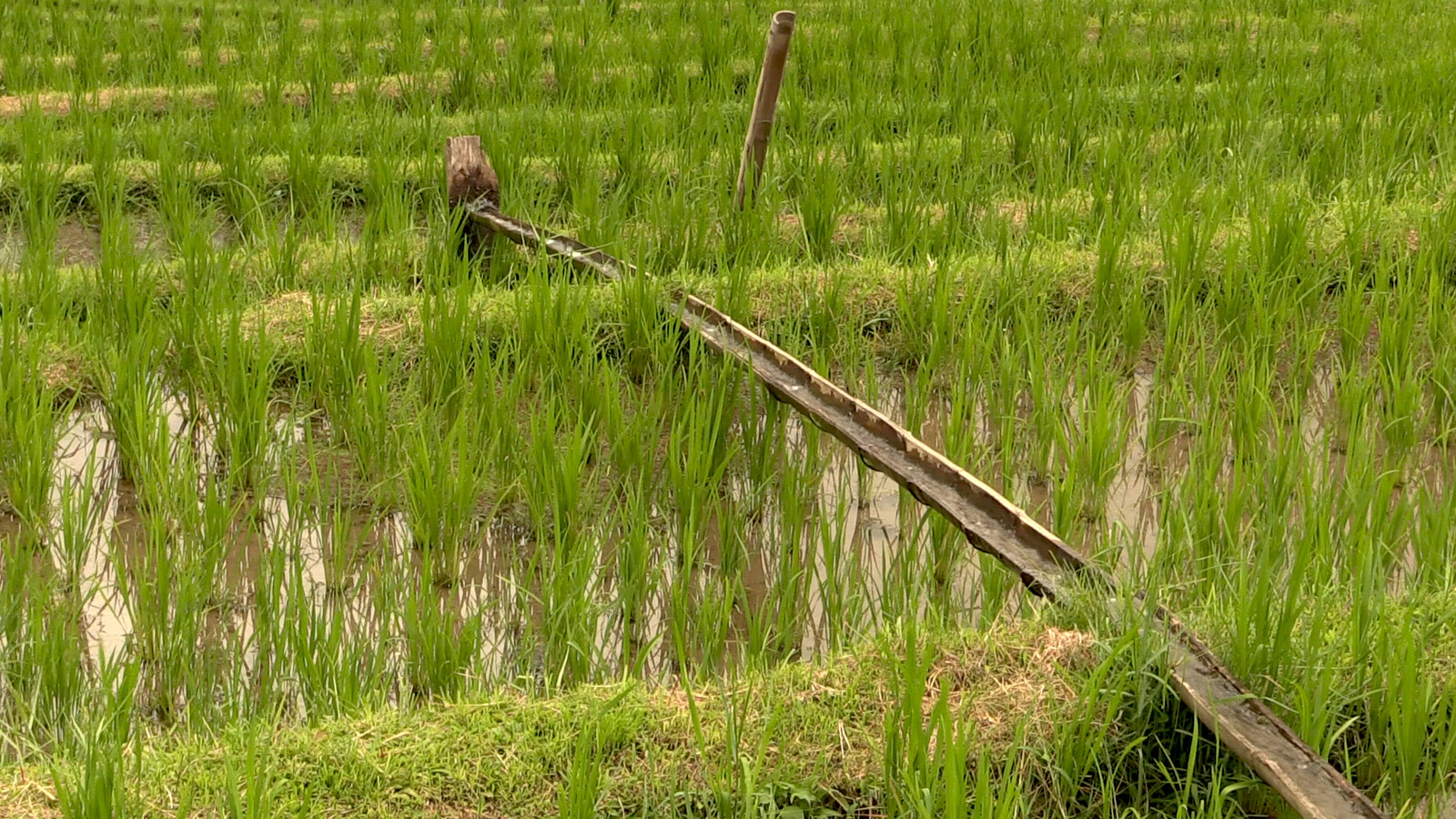
.jpg,1600)
.jpg,1200)
